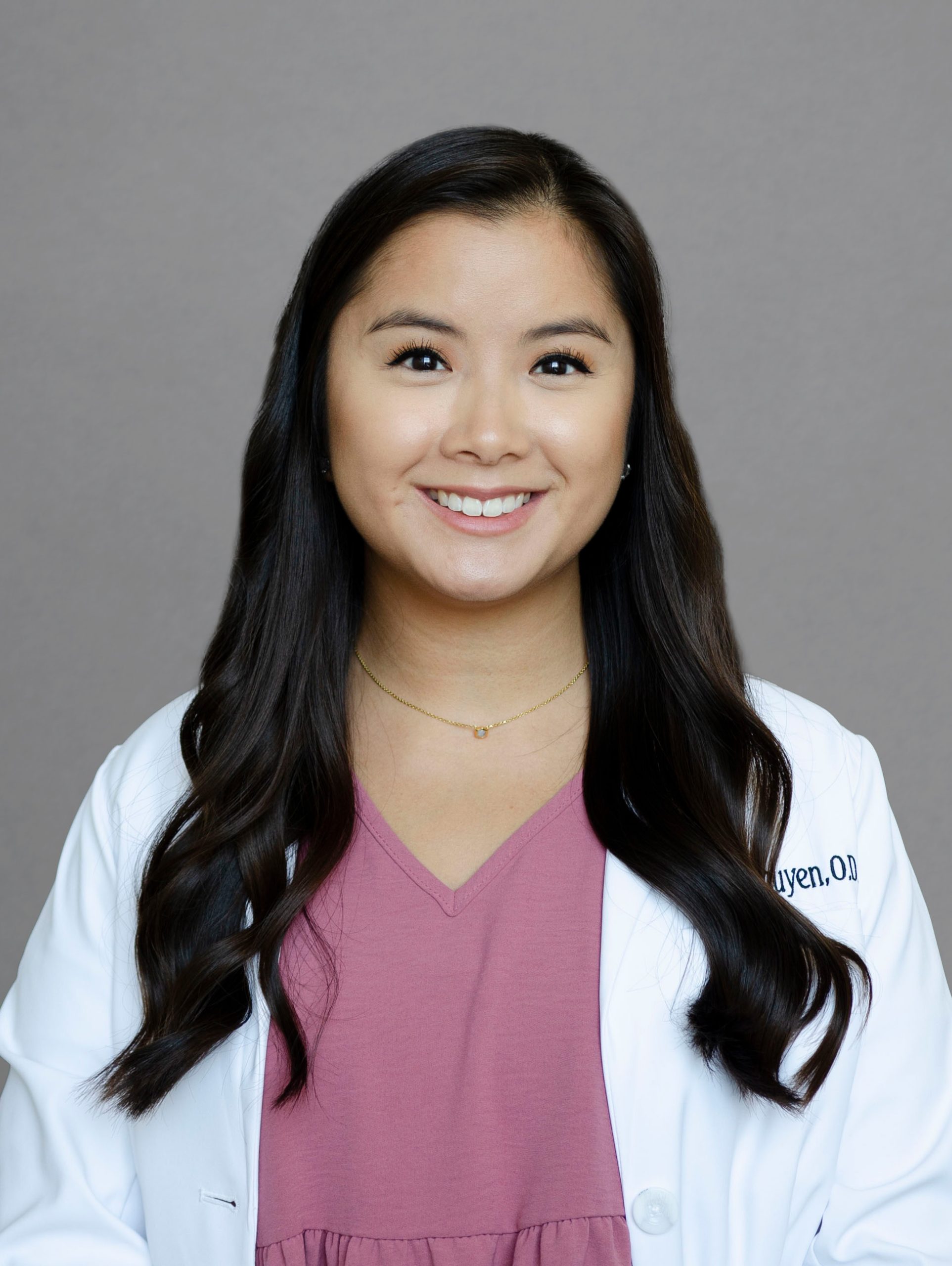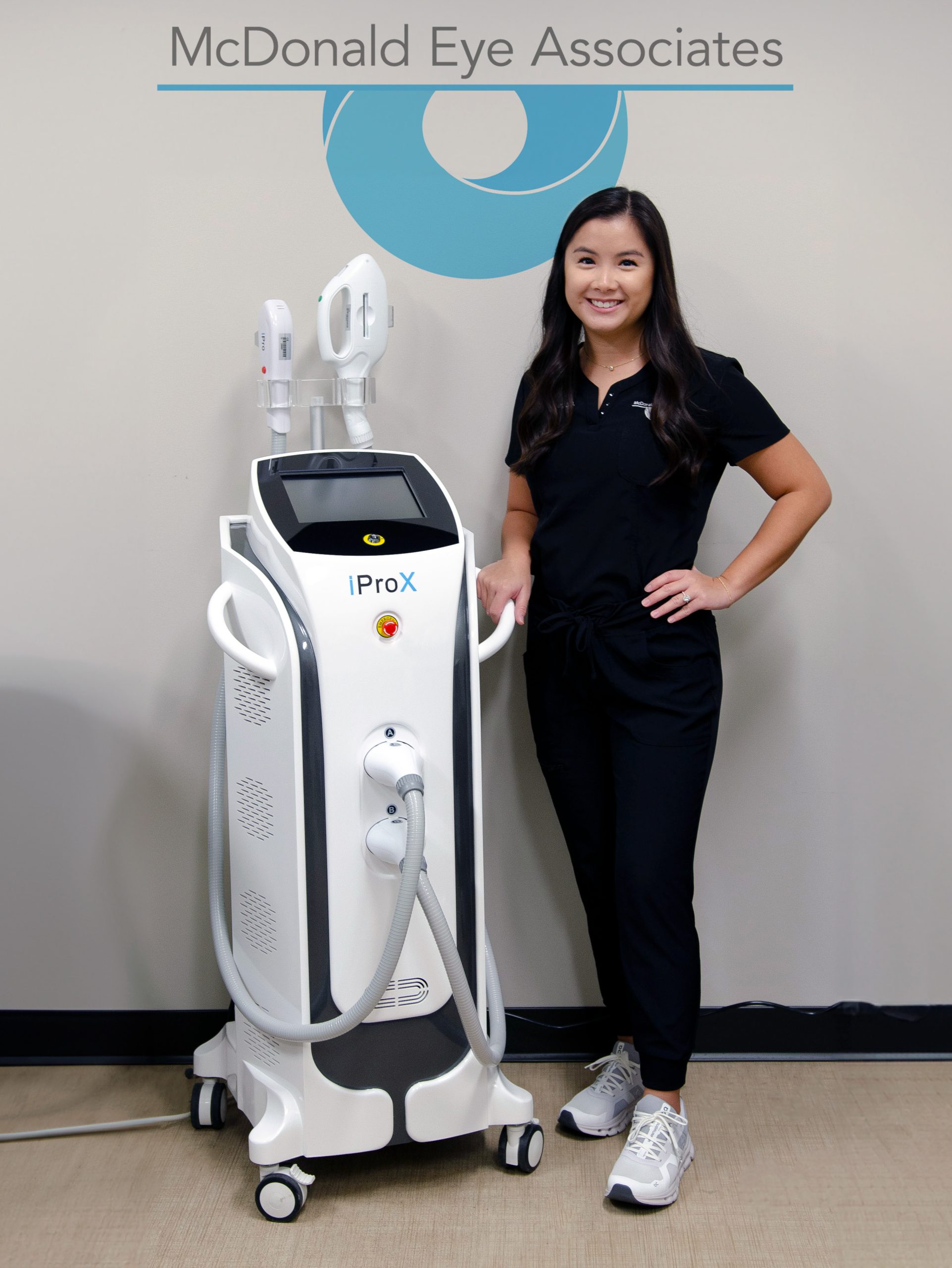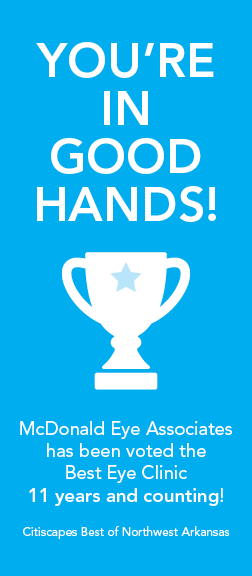What causes dry eye syndrome?
Dry eye syndrome is a common condition in which there is a deficiency in the quality and/or quantity of tears produced by the eyes. Tears perform an important function for the eye in keeping it clean, lubricated, providing nutrition and establishing a smooth surface at which the eye refracts light.

Dr. Tiffanie Nguyen specializes in the treatment and management of dry eye disease.
Typical symptoms of dry eye include dry or gritty sensation, scratchiness, itching, burning, pain, eyelid heaviness, intermittent blurred vision and intermittent tearing. Symptoms are usually worse later in the day, with prolonged use of the eyes and in conditions of heat, wind and low humidity.
Many patients with dry eye syndrome complain of intermittent tearing. Normally the lids produce a small amount of tears to keep the eyes lubricated and healthy. If this baseline tearing is of poor quality or of insufficient quantity to keep the eyes healthy, a message will be sent to the brain to cause a reflex flow of tears from the main lacrimal gland. This is usually a large volume of watery tears that may not provide adequate lubrication. In other cases, the eyes may attempt to make up for poor-quality tears with an increased quantity of tears. In either case, artificial lubricants can help decrease the tearing.
Dry eye syndrome is rarely a serious problem, but it is almost always a nuisance. Treatment initially begins with artificial lubricants, usually drops given three to six times a day. Warm wet soaks with a clean washcloth can also be used when the eyes are especially irritated. Artificial tears work best when given on a scheduled basis rather than in response to symptoms. After beginning therapy with artificial tears, it may take several weeks of continuous use before long-lasting improvement in symptoms is achieved.
More severe cases of dry eye may require the use of an ointment or gel at bedtime, and/or the use of non-preserved artificial tears every hour or two during the day. Patients with severe symptoms may also consider closure of the tear drainage system (punctual occlusion), which allows the patient’s own tears to remain on the eye longer.

Dr. Tiffanie standing with the iProX IPL, the highest performing intense pulsed light (IPL) device on the market with proprietary technology for increased comfort and best-in-class patient results.
All artificial tears are not created equal. Many have preservatives that can cause further irritation, especially if used frequently. Gently preserved artificial tears may be used up to four to six times a day. If more frequent use is required or for especially sensitive eyes, non-preserved tears should be used.
Located conveniently in Fayetteville and Rogers, Arkansas, McDonald Eye Associates and their experienced team of vision care experts are skilled in treating dry eye in several different stages. Call us today to schedule your appointment!




